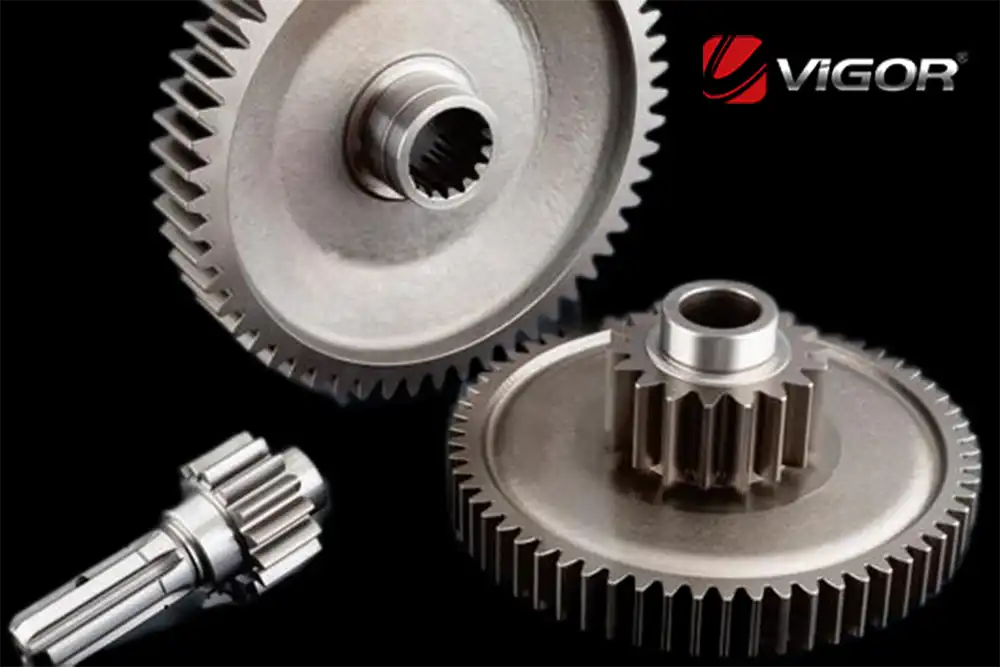
Knowledge
Selection of Materials For Reducer Gear Discs and Determination of Tooth Profiles
The selection of materials for the gear discs of a reducer and the determination of the tooth profile are crucial steps to ensure the performance and lifespan of the reducer. This process requires a comprehensive consideration of various factors to ensure that the ultimately selected materials and tooth profiles can meet the specific application requirements.
In terms of material selection, the commonly used materials for reducer gear discs include carburized steel, powder metallurgy, plastic, etc. Carburized steel is widely used in applications requiring high strength and wear resistance due to its excellent carburizing performance, reachability and mechanical properties. Through carburizing treatment, a high-hardness carbide layer can be formed on the surface, significantly enhancing the gear's wear resistance and fatigue resistance. Powder metallurgy gears are suitable for micro low-power reducers, featuring one-time forming and no need for post-processing, which simplifies the manufacturing process and reduces production costs. However, their precision and transmission smoothness are relatively low, making them suitable for scenarios with lower performance requirements. Plastic gears are favored for their good stability, self-lubrication, and low noise characteristics, as well as their lightweight and low cost. They are particularly suitable for micro-reduction motors and perform exceptionally well in applications where noise reduction and weight reduction are required.
The selection of gear types should be based on the structure form of the reducer, transmission ratio, torque, and other parameters, as well as the usage environment. Common gear types include spur gears, helical gears, and herringbone gears. Spur gears have a simple structure, are easy to manufacture, and are relatively easy to install and maintain. However, they have relatively poor transmission smoothness and noise control and are suitable for applications with low requirements for transmission accuracy. Helical gears can provide better transmission smoothness and noise control. The design of helical gears makes the contact area larger during meshing, and the load distribution is more uniform, thereby improving the load-carrying capacity and transmission efficiency. They are suitable for medium and high-load applications. Herringbone gears combine the advantages of spur gears and helical gears, have higher load-carrying capacity and better transmission smoothness, and are suitable for high-power and high-speed applications, especially in heavy-load and high-precision transmission systems.
In addition, when choosing the tooth profile, the installation and connection methods of the reducer, as well as factors such as room temperature, humidity, and dust size in the usage environment should also be considered. Different installation and connection methods will affect the force state and transmission performance of the gears. Therefore, detailed mechanical analysis and simulation verification should be carried out during the design process. Factors in the usage environment such as room temperature, humidity, and dust size will also affect the wear and lubrication state of the gears. Appropriate materials and tooth profiles should be selected based on specific environmental conditions to ensure that the reducer maintains excellent performance and long service life under different working conditions.
Taking all these factors into account and selecting the appropriate gear disk material and tooth profile can ensure that the reducer has excellent performance and long service life, thereby enhancing the reliability and stability of the entire transmission system and meeting the needs of various industrial applications. This process not only requires profound professional knowledge and rich practical experience but also an in-depth understanding and detailed analysis of the specific application scenarios to ensure that the final selected solution achieves the best results.
If you have any questions, demand, related parts development or improve your supply chain, please feel free to contact us atinfo@castings-forging.com




